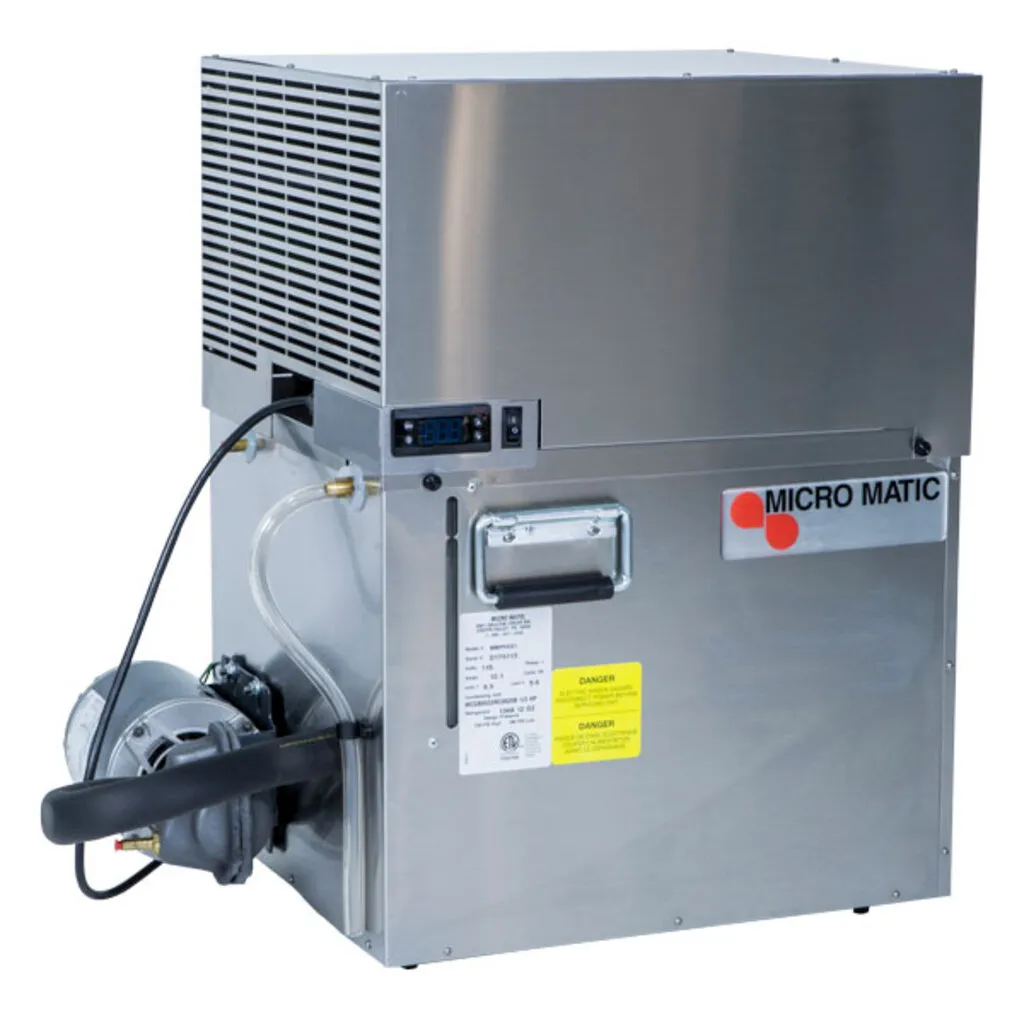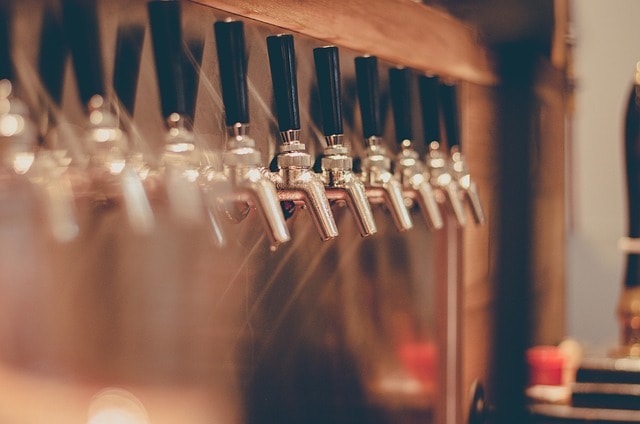Best Draft Beer Fundamentals: Understanding the Basics of Dispensing

Navigating the complexities of draft beer systems can be an intricate process. It requires an understanding of the many variables that factor into dispensing a perfect pint.
From the intricacies of equipment selection to the fine-tuning of dispensing variables, each element plays a critical role in delivering the crisp, fresh taste of draft beer for enthusiasts and casual drinkers alike. The right equipment and knowledge can greatly enhance the quality of the beer served, making a noticeable difference in customer experience.
Professionals in the industry are well-versed in the pros and cons of various commercial beer systems. Utilizing the appropriate beer dispensing equipment is vital for maintaining the beer's optimal flavor and carbonation.
The guidance of a professional draft beer technician can be invaluable for those looking to master the art of draft beer dispensing or improve their existing setup.

Key Takeaways
- Selecting the proper equipment is essential for optimal draft beer dispensing.
- Understanding dispensing variables can greatly impact the quality of draft beer.
- Professional insights aid in navigating the complexities of commercial beer systems.
Key Factors in Maintaining Draft Beer Quality
Optimizing Resistance in Beer Systems
The balance in a draft beer setup often starts with understanding resistance levels. These levels are intrinsic to the equipment and can vary due to height differences between the keg and tap or even the geographic elevation.
The aim is to match the resistance with applied force to ensure a steady flow. This flow is typically approximately 2 ounces per second, resulting in the ideal glass every pour.

Controlling Keg Temperature
The thermal aspect of a draft beer system is critical. With an ideal serving point for beers being around 38 degrees Fahrenheit, temperature control can't be overstated.
Temperatures below this threshold can mute the beer's intrinsic flavors while going above can promote foam formation. This thermal balance also influences the pressure settings required for dispensing, thus interlinking with other dispensing variables.

Balancing Gas Pressure
Maintaining an equilibrium with carbonation pressure is the primary objective in the applied force of a draft system.
The exact pressure requirement is determined by the beer's original carbonation concentration and the storage temperature. For instance, a beer carbonated at 2.6 volumes of CO2 and stored at 38 degrees Fahrenheit would require an applied force of 12.3 PSI to maintain balance and optimal yield.
To achieve this, the system can utilize varied tubing diameters, adding to the resistance and aiding in creating the perfect pour dynamics.
Note: Flow rates and carbonation levels play a crucial role in determining the outcome of the pour, and must be considered alongside resistance and temperature for an ideal draft beer experience.
Equipment for Dispensing Draft Beer
Carbon Dioxide and Nitrogen Tanks
All draft beer systems rely on a gas to propel beer through the system. Typically, this gas is CO2, although nitrogen is also used for certain drinks like nitro coffee, and nitrogenated beers. Nitrogen can also be used to push beer long distances in the Remote Beer System.
The size of CO2 tanks can vary, with options ranging from small 5-pound cylinders to large 50-pound tanks. Bulk CO2 is economical for high-volume establishments since it requires less frequent changes and ensures a consistent supply. For smaller venues, individual CO2 cylinders that are easily replaced when empty might be more practical.
Main Gas Primary Regulators
The main purpose of gas pressure controllers, or primary regulators, is to manage the pressure of gas from CO2 or nitrogen tanks. They are available in low-pressure (up to 60 psi) or high-pressure (up to 100 psi) models, depending on the system's requirements. For nitrogen-dispensed beverages, nitrogen regulators with a distinct male end are used to attach to nitrogen cylinders.

Individual Secondary Regulators
In more complex systems with specific carbonation needs for multiple types of beverages, individual gas pressure adjusters, or secondary regulators, allow for precise control of gas pressure to each keg. They are crucial when serving varied types of beer that require distinct carbonation levels and are available in configurations for multiple kegs.

High-Pressure Tubing
Connecting CO2 sources to other components such as secondary regulators or keg couplers involves using high-pressure tubing. This tubing comes in a heavy-duty braided form for high pressure and non-braided for lower pressures to ensure the gas is safely transported throughout the system. We use this tubing for gas pressures higher than 50 psi.
Transparent Vinyl Tubing for Beer
Transparent vinyl tubing is the conduit that carries the beer from the keg to either a beer trunk line or a draft beer tower. These tubes are clear and available in a range of diameters to fit the specific requirements of the beer system. Also known as low pressure tubing.
Keg Coupler
The keg access device, better known as the keg coupler, is essential for accessing the beer within a keg. This component varies in design to accommodate different keg types or beer styles, with the D-style coupler being the most prevalent in the United States. Using stainless steel couplers is advisable for their durability and to maintain beer quality.

Beer Dispensing Tower
The beer dispensing column or draft beer tower is the visible part of the draft system from which the beer is poured. They can be as simple as a single tap to elaborate custom setups with multiple taps. Glycol-cooled towers are used for long runs, ensuring that the beer remains at the ideal temperature until it is dispensed.

Glycol Chiller
Used in remote draft beer systems, glycol refrigeration units keep the beer lines chilled as they run the hops from the keg storage to the dispensing area. They circulate food-grade antifreeze through the lines to maintain the beer at the ideal temperature, even over long distances.

Beer Faucets
Pouring valves, known as beer faucets, are the interface between the draft system and the glass. They control the flow of beer and can vary in complexity from simple hand-operated taps to more intricate systems designed to reduce foam and control pour speed.

Drip Trays
Lastly, spill collection fixtures or drip trays are placed beneath the faucets to catch any overflow or drips, keeping the bar area clean and preventing waste. They are an essential part of maintaining a tidy serving area.

Commercial Draft Beer Systems
Direct Draw Systems
Direct draw systems are typically integrated with cooling units, featuring taps mounted on the cooler. These taps are directly connected to kegs within the cooler.
They can be affixed to individual units or incorporated into a back wall with a drip tray and glass rinser. This setup is known for its simplicity, cost efficiency, and reduced risk of beer wastage during line cleaning, which is recommended biweekly.
For a small bar or pub, a direct draw unit is an ideal solution due to its short beer lines and straightforward design.
Key Components of Direct Draw Systems:
- Kegs: Stored inside the cooler, directly connected to taps.
- Beer Faucets: The point of dispense mounted on the cooler.
- Beer Shanks: Connect the faucets to the lines and kegs.
- Cooling Unit: Maintains optimal beer temperature.
- Drip Trays and Glass Rinsers: For spill management and glass preparation.

Systems With Air-Cooling
Air-cooled systems feature a forced air blower that propels cool air into the restaurant and beer tower situated above a kegerator.
This configuration benefits from a light, compact size and can serve multiple types of beer—sometimes more than ten—from an eight-foot unit. A commercial kegerator with an air-cooled system is especially fitting for spaces with limited square footage, like small restaurants or grocery store growler stations. These self-contained units offer flexibility for businesses looking to add draft beer without extensive installation requirements.

Features of Air Cooled Systems:
- Kegerators: Refrigerated units that house kegs and dispense beer through towers.
- Forced Air Blower: Keeps the tower and beer lines chilled.
- Tower: The fixture that houses the beer faucets on top of the kegerator.
- Compact Footprint: Ideal for restricted space.
Remote Draft Systems

Remote draft systems offer the flexibility to serve beer across extensive distances, hence supporting multiple dispensing areas throughout a venue.
These systems employ a trunk line, an insulated and temperature-maintained beer line that transports the beer from the cooler to the brew tower. Glycol lines run alongside the beer lines, maintaining a cold temperature to the dispense point.
A glycol chiller continuously circulates the coolant to ensure optimal temperature. Remote systems can be complex and often include additional hardware such as foam-on-beer (FOB) detectors and beer pumps.
The latter offers greater control over beer and brew delivery without affecting its quality.
Components and Benefits of Remote Beer Systems:
- Trunk Line: Insulated line carrying the beer from cooler to tap.
- Glycol Chiller: Equipment that circulates glycol to keep the beer at the correct temperature.
- FOB Detectors: Devices that prevent foam from entering the main beer line after a keg is depleted.
- Beer Pumps: Enhance the serving distance, allowing beer to be dispensed over long distances without quality degradation.
- Flexibility: Ability to serve at multiple points, with success in delivery up to 800 feet from the cooler.

Configuration Considerations:
- Secondary Regulators and Valves: Regulate the pressure for each beer line.
- Installation Kits: Designed for systematic setup within the cooler.
- Ease of Maintenance: Due to centralized equipment, it facilitates service and repairs.
Summary
Three crucial factors fine-tune draft beer dispensing to ensure that craft beer is served at its best.
The Restriction Value is essential for maintaining the proper flow. Meanwhile, Temperature should ideally be maintained at 38 degrees Fahrenheit for optimal taste and consistency. Lastly, the Applied Pressure should ideally match the Restriction Value to keep the beer's carbonation at the right level.
A range of equipment is indispensable for dispensing beer, with a strong recommendation for utilizing all stainless steel equipment for its durability and quality, steering clear of chrome alternatives.
Understanding the different dispensing systems is also key. These include:
- Direct Draw Systems are ideal for proximity-serving
- Air Cooled Systems work well for moderate distances
- Remote Systems are best for long-distance dispensing
Each has its benefits and excels under different circumstances. Grasping the fundamentals of beer dispensing is key to selecting the most suitable equipment and system for any given situation.
For any other questions regarding draft system components please reach out to us at Renny's.



